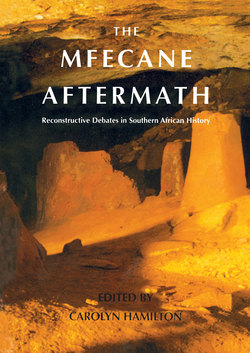Читать книгу Mfecane Aftermath - John Wright - Страница 9
На сайте Литреса книга снята с продажи.
ОглавлениеNotes on Orthography and Names
A degree of orthographic standardisation has been imposed on the various contributions to the book to facilitate its consultation by readers not fully familiar with the field.
•Though many contributors regard it as desirable to use prefixes for Sotho and Zulu people, as in baSotho/Basotho and amaZulu/Amazulu, and for the languages, as in seSotho/Sesotho and isiZulu/Isizulu, the English equivalents have been used in preference to the many linguistic and orthographic variants.
•Except for the names of people, such as Moshoeshoe, Sotho names have generally been given in the South African spelling, rather than in the form used in Lesotho.
Place names present a particular set of problems.
•Many names were corrupted in colonial writings and on early maps. Wherever possible modern spellings have been used in this book even where these differ from those which are in common usage. Thus Thukela and Mzimvubu have been used, not Tugela and Umzimvubu.
•In some instances an appropriate usage is not easily established. A case in point is Karechuenya which is better known as Kaditshweni. Our use of Karechuenya is based on the following argument provided by Neil Parsons:
David Livingstone, writing to his mother on 27 April 1844, in a letter not published until 1959, used the name Karechuenya. Livingstone explained that the town was next to a conical peak called Chuenyane ('little baboon'). 'Karechuenya' meant 'By it we are vexed' or 'A vexation by or near us', a reflexion of people's complaints about the depradations of baboons on their gardens, putting the blame jocularly on the 'little baboon'.1 The name 'Kaditshwene', on the other hand, is a neologism which was first suggested to the archaeologist P. W. Laidler in the 1930s by a white farmer at Zeerust called Hattingh. As Desmond Cole points out, 'People with no knowledge of linguistics or of the Tswana language have confused tshwenyana or tshwenyane, meaning "young or small baboon" and go tshwenyana meaning "to bother or trouble one another".'2
•Wherever possible, the use of anachronistic place names is avoided. While the forms trans–Kei, trans-Vaal and trans-Orange introduce the problem of a Cape-based perspective and in some instances refer to later river names, they are used in preference to their later counterparts (Transkei, Transvaal and Orange Free State), so as to signal a sensitivity to the problems of naming which are a feature of the study of this period of history.
•Where the reference is to modern archaeological sites rather than precolonial settlements, the contemporary form is used, thus the 'Iron Age archaeology of the Transvaal', but the 'Iron Age in the trans-Vaal region'.
•Since these essays were written new structures have replaced the former provinces and homelands. It was decided not to adopt the new names as the book was already at an advanced stage of production. In some of the regions new names are still under discussion.
1.Schapera, I. (ed.), David Livingstone, Family Letters 1841–1856. Volume One 1841–1848, London: Chatto & Windus, 1959, pp. 96–97; Botswana Notes and Records, Vol.6 (1984), p. 38.
2.Desmond Cole Botswana Notes and Records, vol.23 (1991). Jan Boeyens's contributions to this discussion are also gratefully acknowledged.
